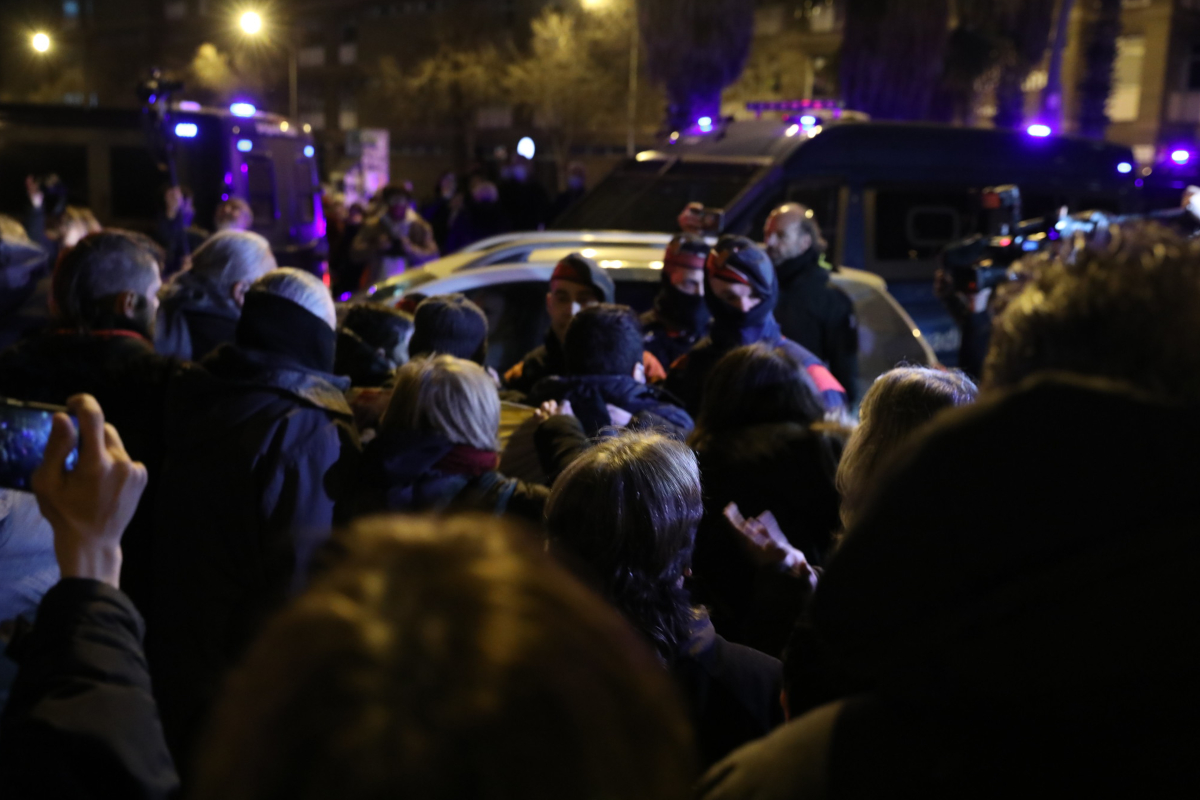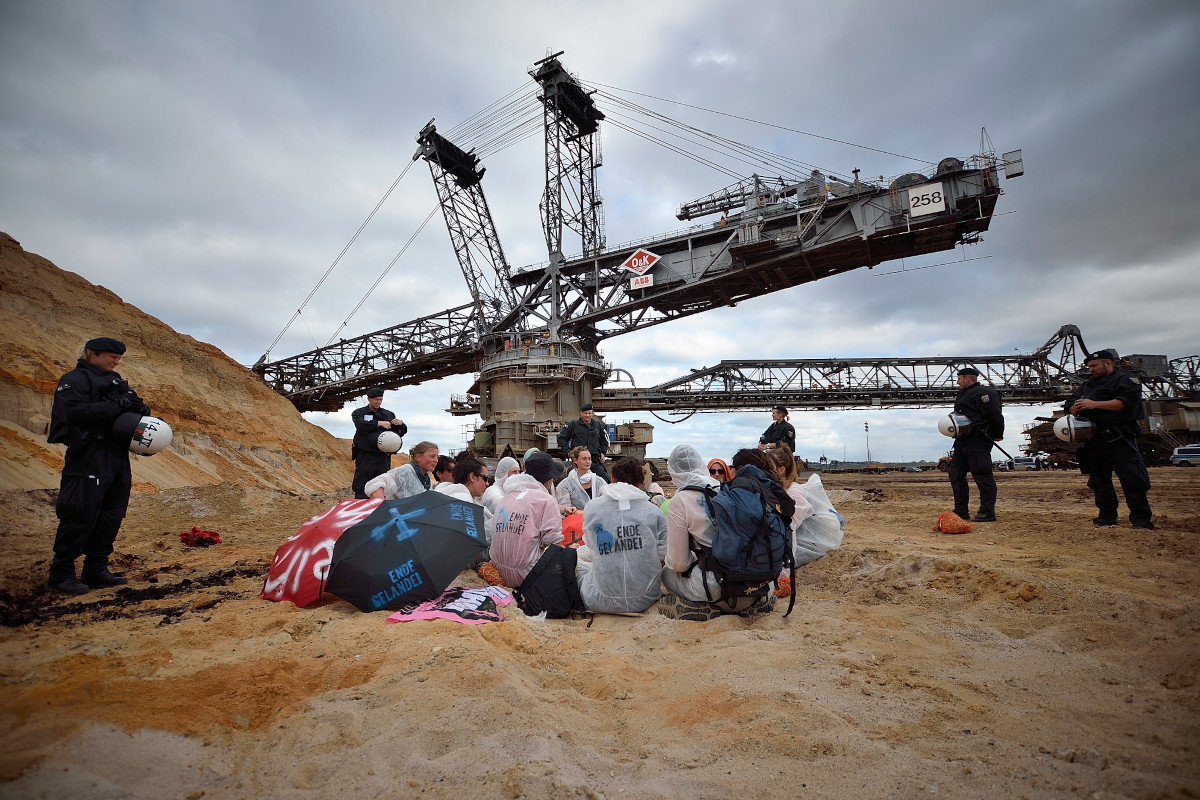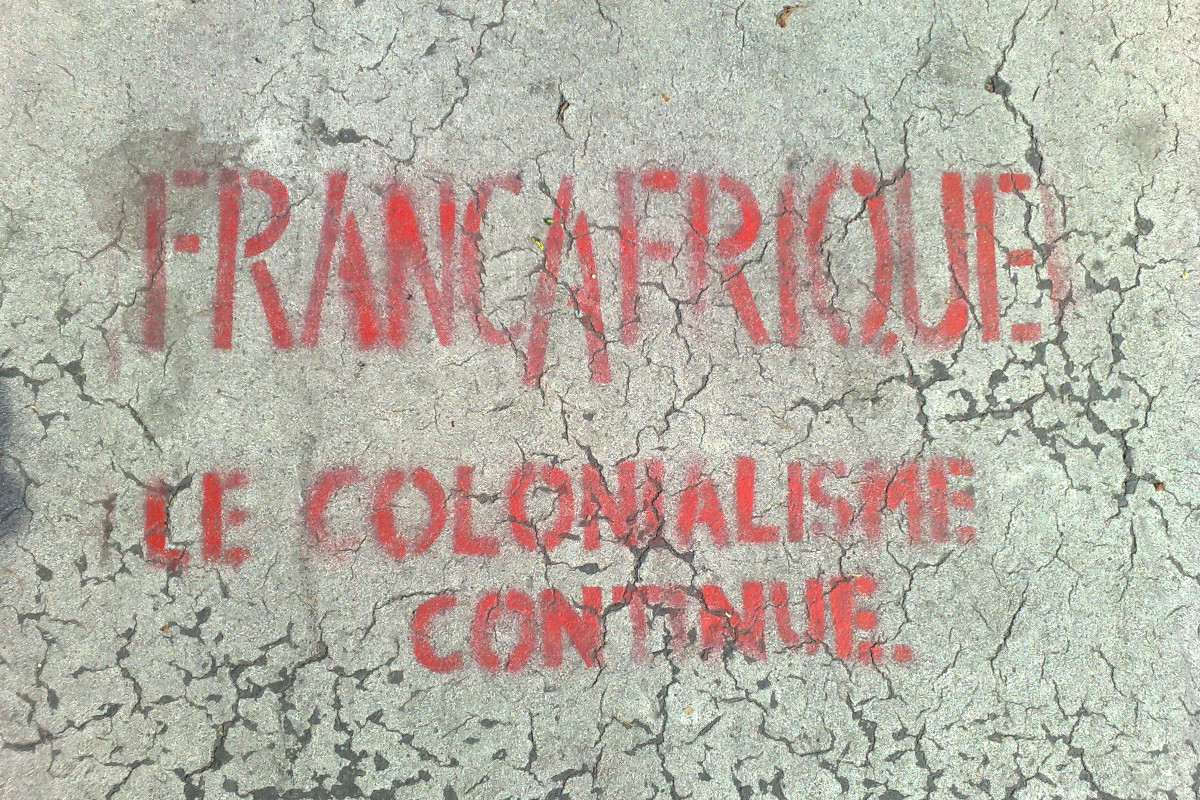Environmental activism under the EU counter-terror microscope
Topic
Country/Region
28 February 2024
Next week, EU and member state officials will discuss “the role of climate change and environmental concerns in violent extremist and terrorist radicalisation.” A discussion paper for the meeting, obtained by Statewatch, considers the threat posed by “violent left-wing and anarchist extremism” – a heading under which a number of prominent environmental protest groups are mentioned. The inclusion of peaceful but disruptive groups in the paper may legitimate further police surveillance and infiltration, legal harassment and government crackdowns – a problem identified as “a major threat to human rights and democracy” by a UN Special Rapporteur.
Support our work: become a Friend of Statewatch from as little as £1/€1 per month.
Threat detector
The report (pdf) was produced by the EU’s Counter-Terrorism Coordinator (CTC), who is responsible for coordinating the EU’s work on counter-terrorism - for example, by “presenting policy recommendations and proposing priority areas for action to the Council.”
It is due to be discussed next week (pdf) at a meeting of the Council’s Terrorism Working Party (TWP), and will be presented under the auspices of the new CTC, Dutch official Bartjan Wegter. He replaces Ilkka Sami, who in January was appointed Deputy Director-General for Security, Workplace & Wellbeing, at the Commission’s human resources department.
The CTC's paper mentions prominent protest groups such as Ende Gelände, Extinction Rebellion, Just Stop Oil, Last Generation, Plane Stupid and Soulèvements de la Terre, all of whom have regularly engaged in blockades, marches, and other forms of protest – up to and including property damage, in some cases.
The paper refers to the use of “paint to vandalise vehicles, such as private jets,” as well as “hunger strikes and road blockades,” alongside the throwing of soup and mashed potatoes at famous paintings – acts that caused no damage to the paintings, but did generate substantial media coverage.
It makes clear that “the actions of these groups, as they stand, cannot be classified as terrorism,” but paints them as providing potentially fertile ground for radicalisation. It thus provides legitimation for further surveillance and infiltration by police and security services, along with other interventions by the state: anti-radicalisation programmes, arrests, and badmouthing by government officials, contributing to a broader media environment that seeks to demonise environmental protesters.
A threat to human rights and democracy
These are, in fact, precisely the issues taken up by a UN Special Rapporteur in a report published this week (pdf), which lays out the problem clearly in the title: ‘State repression of environmental protest and civil disobedience: a major threat to human rights and democracy.’ In the report, Michel Forst, the Special Rapporteur on Environmental Defenders under the Aarhus Convention, makes five clear recommendations to states:
- address the root causes of environmental mobilization;
- take immediate action to counter narratives that portray environmental defenders and their movements as criminals;
- do not use the increase of environmental civil disobedience as a pretext to restrict the civic space and the exercise of fundamental freedoms;
- comply with their international obligations related to freedom of expression, peaceful assembly and association in their response to environmental protest and civil disobedience and immediately cease the use of measures designed for counterterrorism and organized crime against environmental defenders; and
- ensure that the courts’ approach to disruptive protest, including any sentences imposed, does not contribute to the restriction of the civic space.
While the CTC paper makes an effort to draw a line between “peaceful environmental protest”, “non-violent civil disobedience” and “violent left-wing and anarchist extremist,” by placing them all on the same continuum of “threat”, it is likely to contribute to precisely the situation that the UN Special Rapporteur’s paper warns about.
Infiltration by extremists
The CTC paper expresses concern that the environmental movement may face “infiltration of violent left-wing and anarchist extremist (VLWAE) actors,” at the same time as those “VLWAE actors” may increasingly adopt environmental causes as their own. It says a recent report published by the EU’s Radicalisation Awareness Network “affirms that VLWAE actors appropriate environmental causes for their own agenda.”
That paper (pdf), published in 2021, argues that “left-wing and anarchist extremist organisations in the various EU Member States have actively supported environmental movements by participating in rallies and other activities,” but provides no evidence to support that claim. It also states that “frequent cooperations [sic] between members of animal rights, anarchist and environmental extremist groups have been reported in recent years,” but does not say who has produced those reports, nor does it provide any more precise details.
One of the report’s many recommendations was for “targeted training for local beneficiaries (e.g. social workers, health services, etc.)” in order to design “disengagement interventions,” which “can also support the detection of infiltration into the radical left activist and militant scene by elements from VLWAE groups and spot early on signals of radicalisation within groups that are not yet violent.” That is, agencies ostensibly in place to provide welfare or health services should be pushed to actively monitor the "radical left activist and militant scene" in order to take on the work of the police - something that, in practice, already happens in many states with regard to all manner of causes and ideologies.
Another recommendation of the RAN report was for anti-radicalisation practitioners to increase their contacts with law enforcement authorities, who “are most likely to have a more updated and nuanced knowledge of both this violent extremist milieu and the legal activist/militant radical left scene.”
Nuanced knowledge
With the ecological and climate crises worsening and governments seemingly unwilling or unable to meet the pledges they themselves have made to try to address the problem, it is hardly surprising that environmental protests have increased in both size and disruptiveness. This, in turn, has led to fresh attention from the police across Europe, as demonstrated in Europol’s annual “terrorism situation and trend” reports.
The 2023 report, which covers events in 2022, included a specific focus on “environmental extremism,” and said that “environmentally-inspired terrorism” is “expected to gain further prominence.” This was the first time that environmental groups were examined under their own specific heading in the report – in previous years environmentalism has been mentioned, but primarily as a topic that attracts the attention of certain groups, or as a form of “single-issue” activism or terrorism.
For example, the 2011 report focused on environmental activism alongside animal rights activism, and argued that there was growing cooperation “between violent left-wing and violent environmentalist extremist groups.” The 2014 report, meanwhile, listed locks-on, blockades, demonstrations and parades under the “violent extremism” heading.
One conclusion of the 2023 report with regard to “environmental extremism” was that:
Environmental extremism is likely to further propagate within an EU affected, directly and indirectly, by climate change. Given some already observed overlaps in narratives, environmental activists may be increasingly influenced by violent extremist messaging, particularly in the left-wing and anarchist scenes. Similarly, violent extremists may exploit and infiltrate environmental protests to enact their agendas and may recruit new followers among activists with similar environmental grievances.
Spying and surveillance
Since the early 2000s, state monitoring and infiltration of environmental and protest movements has been behind incredibly intrusive rights violations. The most egregious example is the case of Mark Kennedy, who spent seven years embedded in the UK’s environmental direct action movement in the name of protecting "public order". During that time he deceived multiple women into intimate relationships – described by the police themselves as “abusive and manipulative” – and caused multiple miscarriages of justice.
Kate Wilson was one of the women who was deceived into a relationship with Kennedy. Following a 2022 court ruling that found the police had violated her human rights in five different ways, she said:
The finding that these operations breached the rights to freedom of expression and assembly and were unlawful amounts to a long overdue recognition that spying on protest movement [sic] is political policing and has no place in a democratic society.
It is important, because it goes beyond the scandal of undercover officers deceiving women into intimate relationships. Violating our political rights was the entire reason for these deployments and thousands of people will have had their political rights violated in this way.
Elevating environmental protest to an EU-level policing issue is likely to legitimise the ongoing surveillance and harassment of environmental activists seeking to exercise those political rights.
The CTC’s paper notes that “the conflation of peaceful climate activism with radicalisation and terrorism may increase polarisation by wrongly labelling activists as radicals and trivialising terrorism.” Yet by warning that the “adoption of climate change and the environment in violent extremist rhetoric can increase the risk of radicalisation, especially among younger populations,” it places peaceful protest on a spectrum, on the other end of which is terrorism. This is the widely-discredited “conveyor belt” theory of radicalisation, for which there is no evidence and which merely serves to justify increasing state intrusion into, and restriction of, peoples’ rights.
To prevent individuals sliding along that spectrum towards terrorism, the CTC paper makes a number of recommendations:
- for the authorities, including Europol and INTCEN (the EU’s Intelligence Analysis Centre) to gather more information on “the role of climate change and the environment in the ideologies and motivations of violent extremist actors”;
- consider developing a strategy “for how violent radicalisation motivated by climate change and environmental concerns can be better taken into account in EU’s prevention efforts”;
- continue exchanges in the Terrorism Working Party to develop “a common understanding of the role of climate and environment-related topics in violent extremism across EU Member States”;
- consider making referrals of “violent extremist online content related to climate change and the environment” to the EU’s Internet Referral Unit; and
- exchange information “with like-minded third countries,” to understand the situation outside the EU and “share best practices.”
It may not be the paper’s intention, but carrying these recommendations forward is likely to contribute to the growing climate of repression for peaceful environmental activists and organisations. As the UN Special Rapporteur report quoted above puts it:
More and more, public authorities appear to consider any disruption as a form of violence or threat to public safety, and, on this basis, unduly restrict the exercise of the right to peaceful assembly or prohibit certain forms of protests entirely… While acts of civil disobedience relating to the environment are not new, State responses in recent years show a stark increase in repression. The way that public authorities are dealing with environmental civil disobedience is the result of their deliberate choices.
This is not simply a problem for those individuals and groups affected, of course. The ultimate effect of crackdowns on environmental protest is, as the UN Special Rapporteur puts it, “on society’s capacity to address the environmental crisis with the required urgency” – an urgency that continues to grow with each passing day.
Documentation
- EU Counter-Terrorism Coordinator, The role of climate change and environmental concerns in violent extremist and terrorist radicalisation in the EU (Council doc. 5982/24, LIMITE, 30 January 2024, pdf)
- Terrorism Working Party (TWP), Notice of meeting and provisional agenda (Council doc. CM 1559/1/24 REV 1, 23 February 2024, pdf)
- Michel Forst, UN Special Rapporteur on Environmental Defenders under the Aarhus Convention, State repression of environmental protest and civil disobedience: a major threat to human rights and democracy (28 February 2024, pdf)
Author: Chris Jones
Our work is only possible with your support.
Become a Friend of Statewatch from as little as £1/€1 per month.
Further reading

EU: Hamas ban plan sparks concerns of crackdown on pro-Palestinian action
A Franco-German-Italian plan setting out proposals to counter the activities of Hamas at both EU and global level has raised concerns that governments may use it as a justification for further attacks on pro-Palestinian protest and campaigning. The document outlines strategies ranging from restricting resources to banning support networks.

French government steps up repression after bloody battle of Sainte-Soline
In the aftermath of the heavy repression of activists protesting against the construction of industrial water storage basins in France on 25 March, two protesters are still in critical condition in hospital. Meanwhile, interior minister Gérald Darmanin announced heavy measures to be taken against the organisers of the mass demonstration in Sainte-Soline and even threatened to take steps against a renowned human rights organisation.

Second undercover police officer spying on Barcelona activists unmasked
An officer of the Spanish National Police Corps infiltrated activist groups in Barcelona over a three-year period, joining the social centre La Cinétika in 2020 and initiating sexual relationships with women that facilitated his participation in assemblies, events and demonstrations.
Spotted an error? If you've spotted a problem with this page, just click once to let us know.


